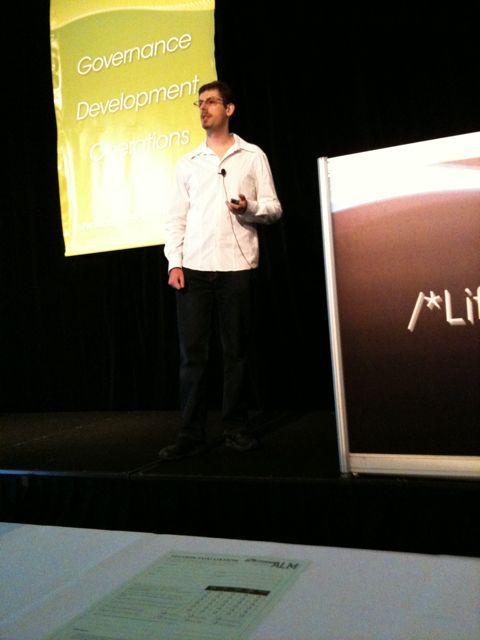The inaugural Australian ALM Conference has been an interesting 2 days. The first day had a number of insightful talks, especially interesting to hear Sam Guckenheimer on how Microsoft has been reshaping their internal development practices into a more agile model. Today, I enjoyed Richard‘s agile adoption talk (hear hear!) and the other highlight was the last presentation of the day, explaining what’s gone into the design of the new Windows 7 Mobile OS (though some things still seem under wraps). Also a pleasure to catch up with some old friends at the conference.
Conference organisation was very good (thanks to Anthony Borton and his team). The focus was very Microsoft centric, but next year, the plans are for a much wider variety of content. Lunar Park was a cosy conference venue and fun to go outside during the breaks and see kids screaming on rides and the sun shining on the bridge and harbour.
My presentation was 8.30am this morning (aargh!) but despite the early hour, there was a reasonable turn out and quite a few interested people asking questions. The plan was to co-present with Jason Yip, but he was called away to Perth so I presented solo. Unlike most other presentations at the conference, Visual Studio and TFS were barely mentioned. Instead I focused on current problems in each area of ALM, coming up with a criteria to assess this area, and what we usually do on projects to meet this criteria – eg, story walls, story maps, automated build and deploy etc. You can find the Powerpoint slides here. The slides are promises for a conversation (ie, mainly images with some notes), so don’t hesitate to contact me if you want to chat.
Also, thanks Richard for this photo from the presentation:


